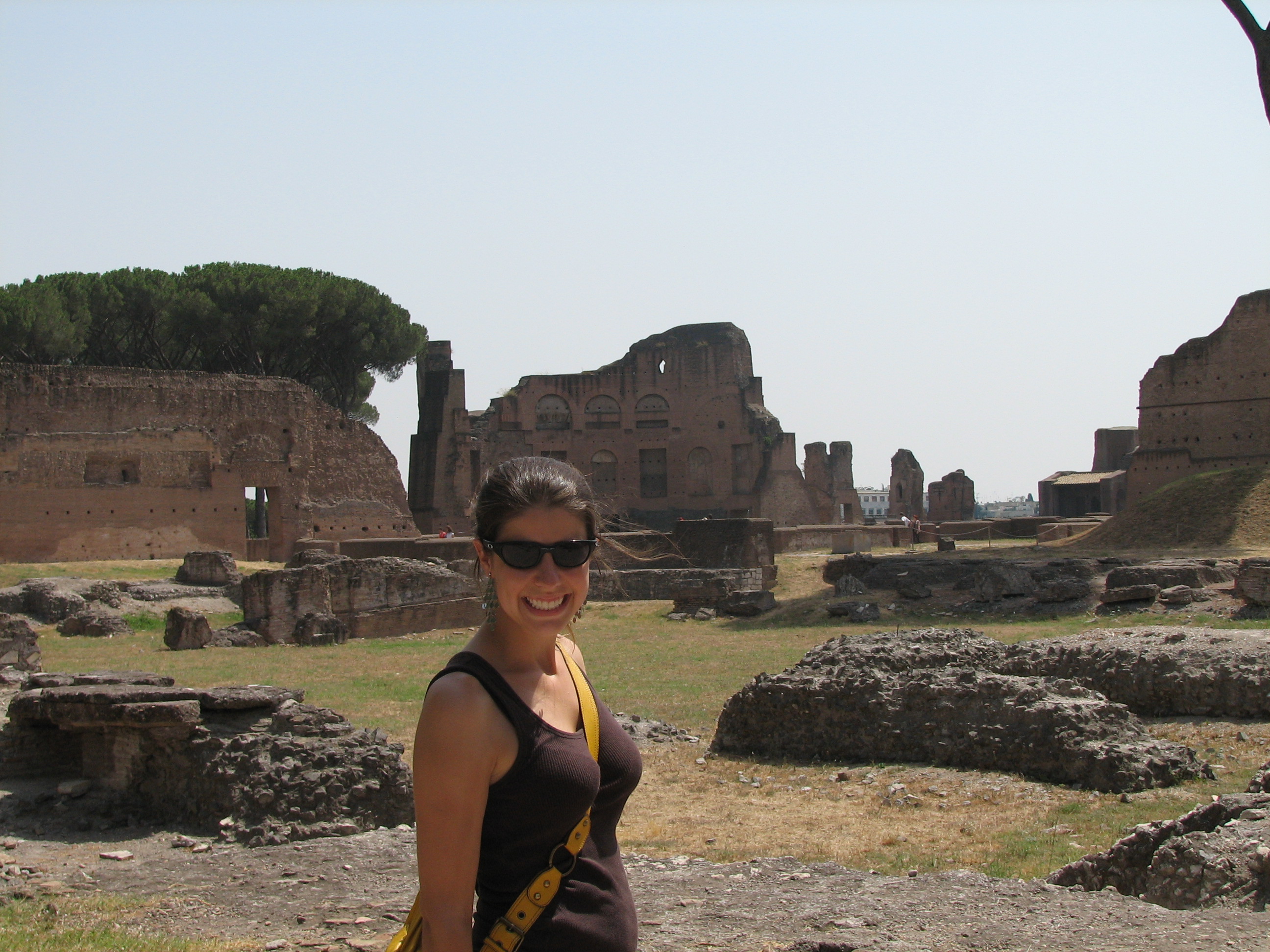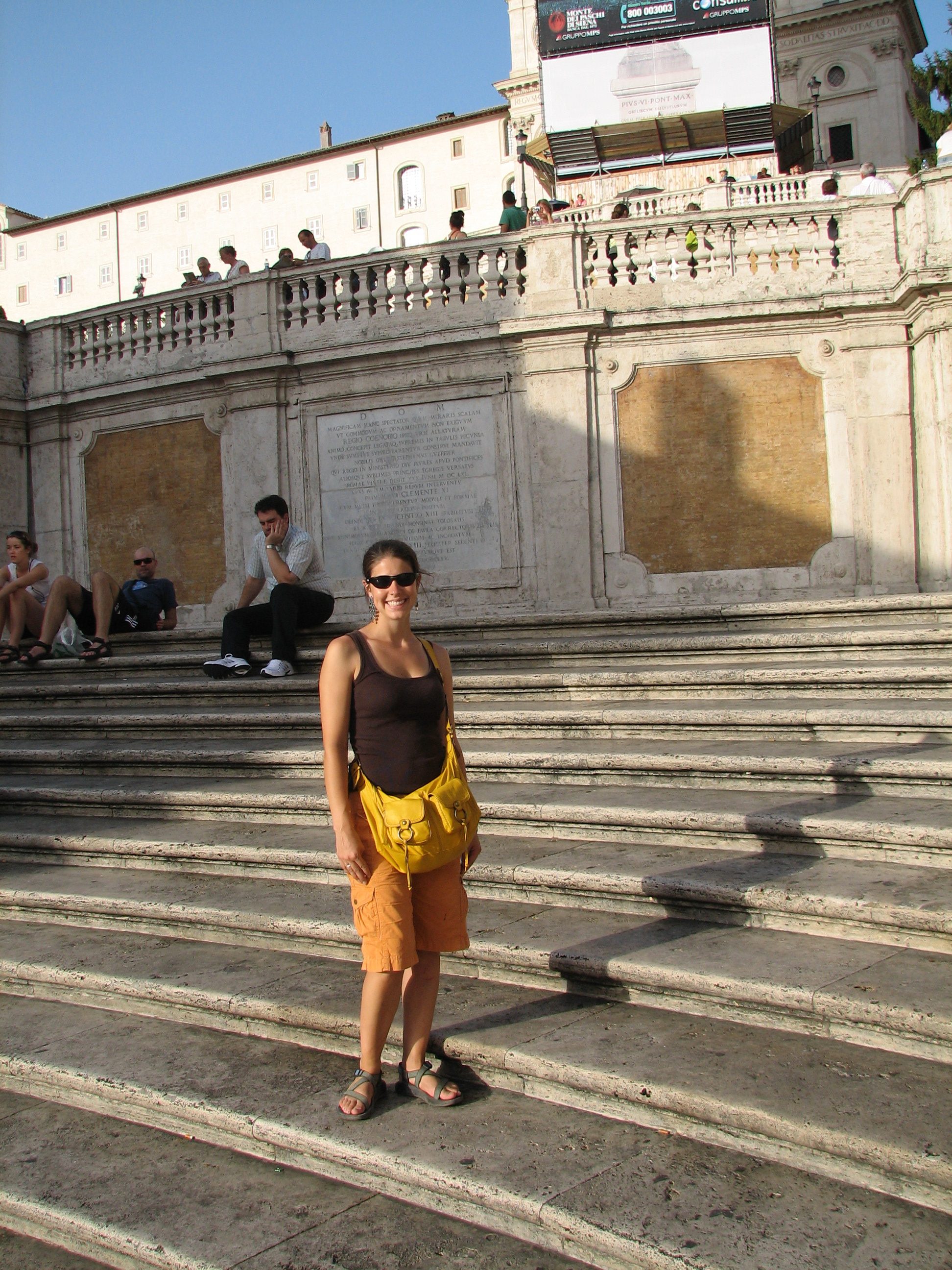Ah, Roma! The baking sun melts ice cream into tiny lukewarm streams of sticky sugar and toasts your skin in whatever shape the stencil of your clothes provides. It is a city steeped in heat and history, and if you come in the summer months you won’t be able to miss either. The Ancient Romans, a race of fierce warriors, created a city with a tantalizing blend of both reverence and irreverence.
Now considered the capital of the Christian world, Rome has a history of reverence that long predates the birth of Christ. After attending mass at St. Clemente’s Basillica, we hopped in line to go on a “scavi” tour of the excavations underneath the church. As you descend, you drop out of the Roman heat and into the murky damp of Rome’s underground where the temperature hovers around a blissful 15 degrees Celsius. Underneath, we saw a traditional pagan temple which was later a second century Christian house church, which was later a 4th century church, which was home to St. Cyril’s relics, which was subsequently added onto, decorated, filled in, and built over right up to the present day. For centuries, and centuries, people have been going to that spot to worship, to acknowledge something greater. Many Christian sites in Rome were in fact originally pagan constructions, such as the Pantheon. The dome of the Pantheon made of poured concrete was used to mark the movement of the heavens, the summer solstice, and other important features in the pagan calendar before being rechristened as the Basillica dei Santa Maria e Martres.


Then there are the catacombs that stretch on and on underground for miles, filled from floor to ceiling on four levels with secret graves made famous for being the burial grounds of the early Christians undergoing persecution at the hands of emperors like Nero—but they didn’t start that way. At first they were used for pagan resurrection cults like the cult of Isis who didn’t believe in cremation. Then they were used by the Jewish people before being used by the ancient Christians. Our guides repeatedly warned us to follow the group and to go nowhere by ourselves. Just after WWII, a group of French schoolchildren and their teacher and their guide got lost in the catacombs and their bodies weren’t found until the 1980’s. Tucked away among long halls of graves are tiny chapels where the first priests would celebrate the Eucharist over the bones of the first martyrs. Many of the grave slots were short, crafted for the many, many children who were killed for their faith. It was moving to walk along the original stone staircases trod by those Christians who were so faithful and so reverent and so strong here, even as they worshipped in the presence of so many martyrs, knowing how easily they could end up as one.
Roma is thronged with churches. Close your eyes, put your finger down on a map somewhere, and you’ll come up with at least one church in the area with some great claim to fame. We visited a church that had the relics of St. Valentine. We also visited St. Peter in Chains Church which holds the chains that bound Peter when the angel freed him from prison.

But you cannot explore the idea of reverence in Rome without a trip to the Vatican. Despite being able to say you’ve been to the smallest country in the world, you get to experience one of the most majestic and holy places to Christianity. Starting in the expansive Vatican museums, you stroll for hours through countless rooms filled with priceless treasures from paintings to tapestries to old geographical maps. They even have a modern religious art section which is relatively unvisited and worth a look. After being dazzled with the most valuable art collection in the world, you finish up with Michelangelo’s Sistine Chapel. Push through the crowds and vie for a seat on the wooden bench that wraps the walls. You’ll want to spend a few long minutes craning your neck and straining your eyes in amazement. One of Michelangelo’s jealous contemporaries actually had him pulled from a sculpture project for the Pope’s tomb and put on the fresco project in an effort to embarrass and discredit him since he hadn’t painted a fresco in 15 years . . .
If you sneak out the right-hand door instead of the main left-hand exit (pretend you are part of a group) you can take a passage straight into St. Peter’s Basilica and bypass the line. St. Peter’s, built on the location of the first pope’s grave, is a place that manages to maintain its reverence even when it is teeming with tourists. The high altar rises in the middle of the Basillica with dark spiraling columns embellished on top with a dove in a splash of glittering gold sunbeams. The faithful file by in lines to rub St. Peter’s foot (the statue, not the relics), and to see St. Jerome’s grave. In the crypt people stand quietly, some silently crying, in front of the late Pope John Paul II’s grave. We spent a few minutes participating in Eucharistic adoration before we stepped back out into the bold sunshine of the plaza.

All of Rome’s reverence is easily juxtaposed with her irreverence. The sacred Palatine hill with the homestead of Romulus, fonder of Rome, is also the home of the extravagant Imperial Palace complex that epitomized the sumptuous, decadent lifestyle of the Roman emperors. We stumbled through the dry, cracking, arid ruins of Nero’s tunnel and Domitian’s feast rooms (one feast went on for 16 hours straight). We strolled down the Circus Maximus where hundreds of thousands of people were killed for public spectacle and the best charioteers of the empire competed. Even today, it remains the largest sporting arena in the world.

Then there’s the iconic Colosseum in all of its stripped, naked glory. Here the people were entertained with bloodthirsty gaming and inventive executions—some criminals were forced to wear wax wings like Icarus then were pushed to their deaths from some high point. The roaring crowds watched such spectacles 150 days out of the year enjoying free food, free drink, free admission, and free handouts while they were there. The fights were so bloody, the wooden floor had to be lined with sand to soak up the blood (and so it would show up better of course). The Latin word for sand (arena) is why we now call such sporting locales, arenas. Gross, huh?

Rome’s intense piety (you must cover your shoulders and knees to be allowed in churches) is interspersed with a fierce heritage and a thriving material culture. Coming off the Spanish Steps and walking the Via del Corso, the shops follow one after another with designer logos, tuxedoed doormen, jaw dropping price tags, and crowds of people clutching shopping bags.

We bookended our stay in Rome beginning with a visit to the Time Elevator, a Disney-esque experience that offers an Imax-style introduction and brief overview of Roman history complete with moving seats and gusts of wind, and ending with a final European meal at a sidewalk cafe overlooking the ruins of the Roman forum. Afterwards, we munched huge juicy slices of fresh watermelon as we cut through the sultry night air on our way back to pack.

Rome is a city where you cannot help being awe; you cannot help but feel small; and you cannot help feeling reverent towards something greater, better, bigger than you.
It was a perfect end to the Great Ideas Tour where the best ideas never end with yourself, but point towards something bigger, just there on the horizon, like the fat yellow moon hanging over the Colosseum as we ended our final night in Europe.
Arrevederchi!
Kristi